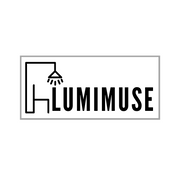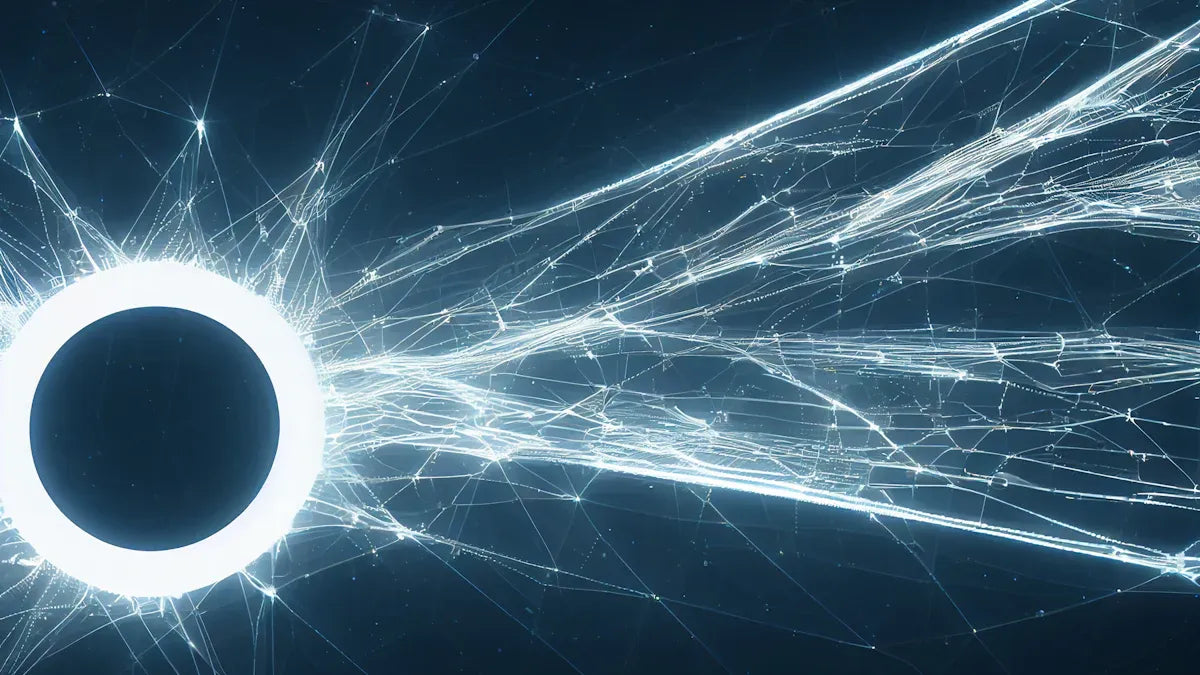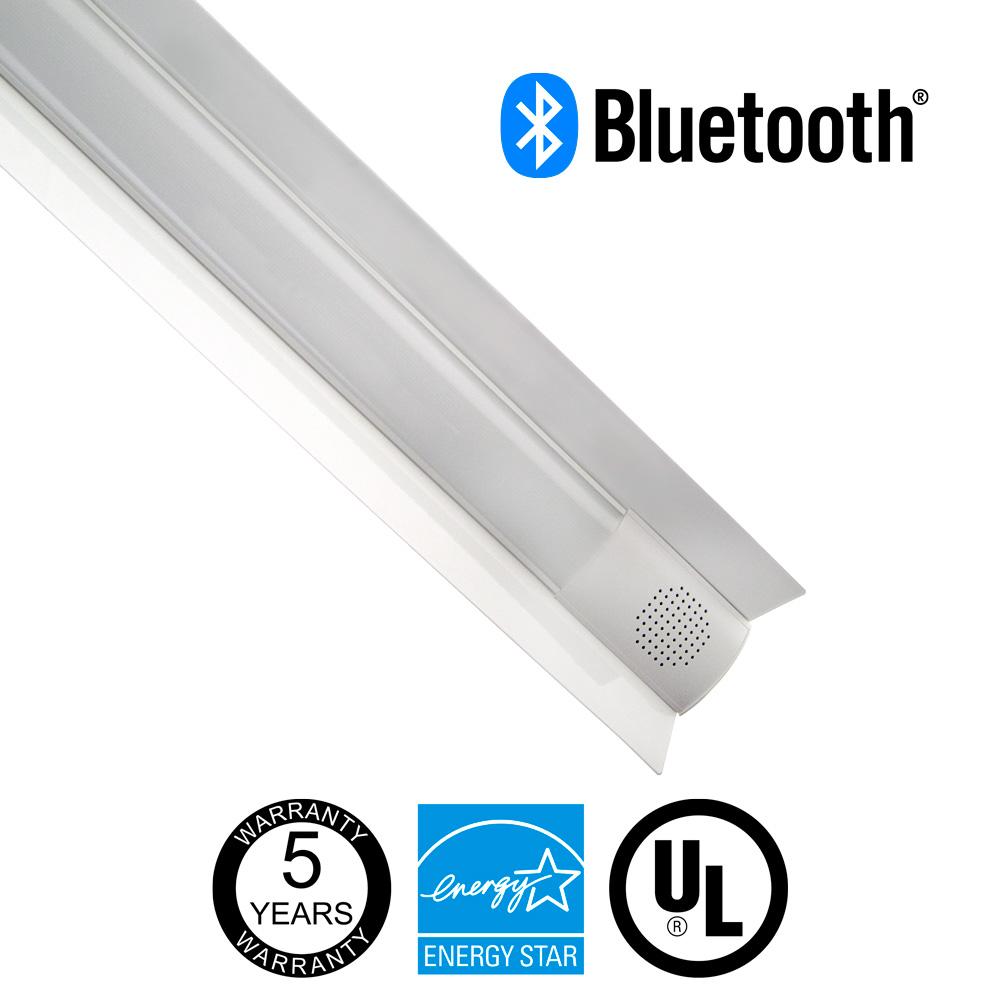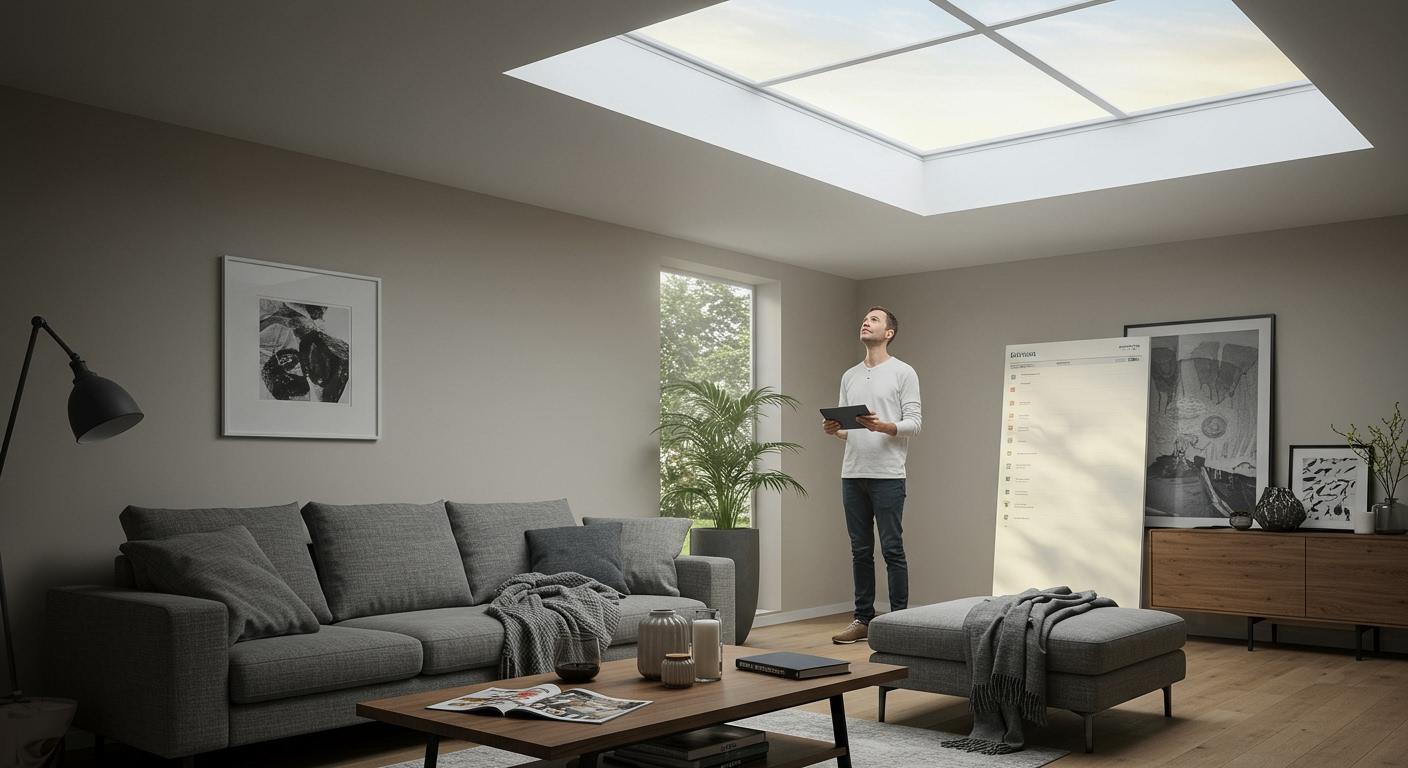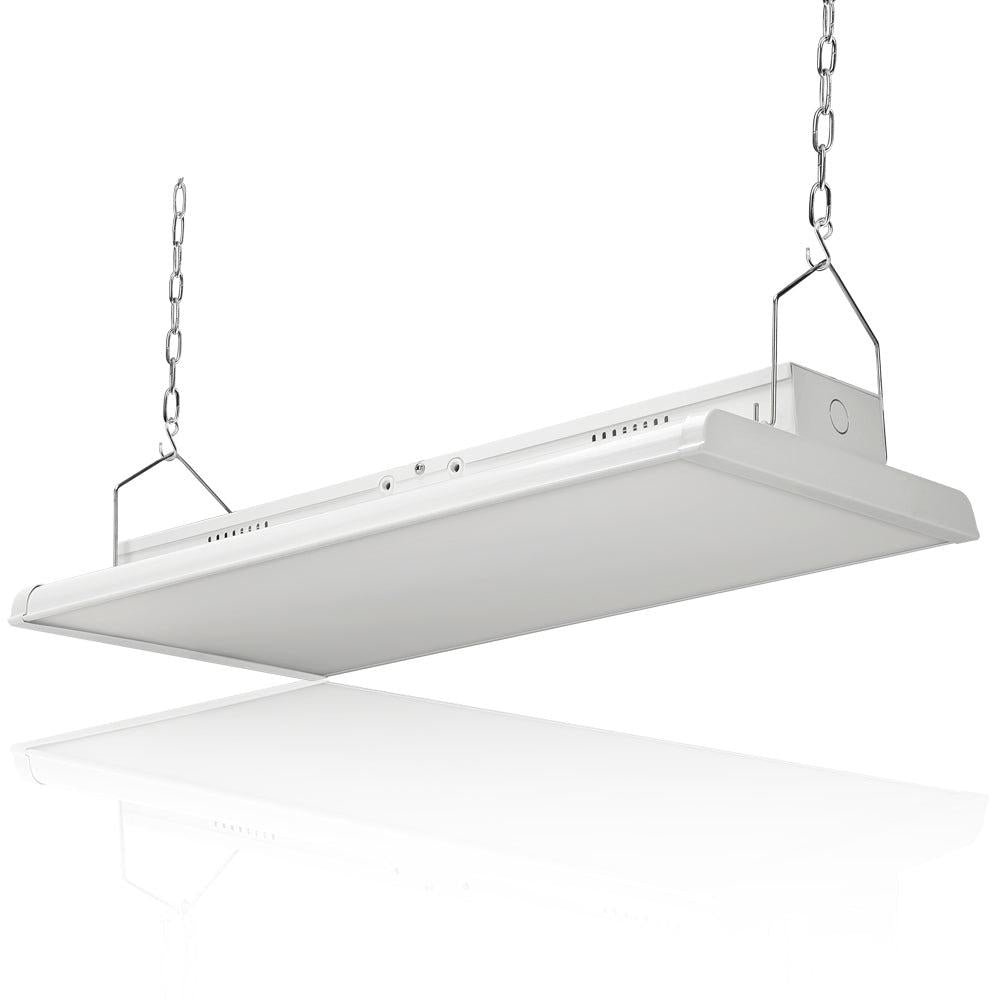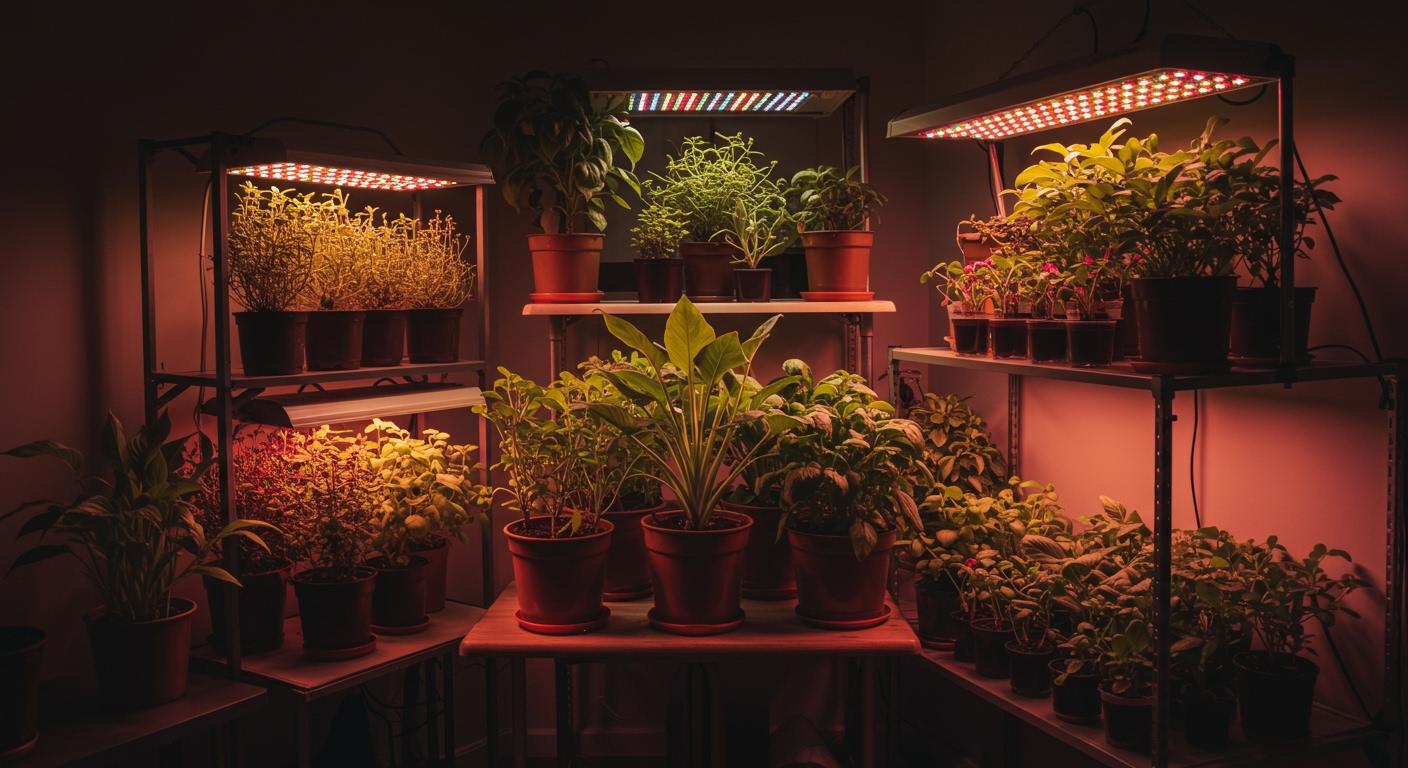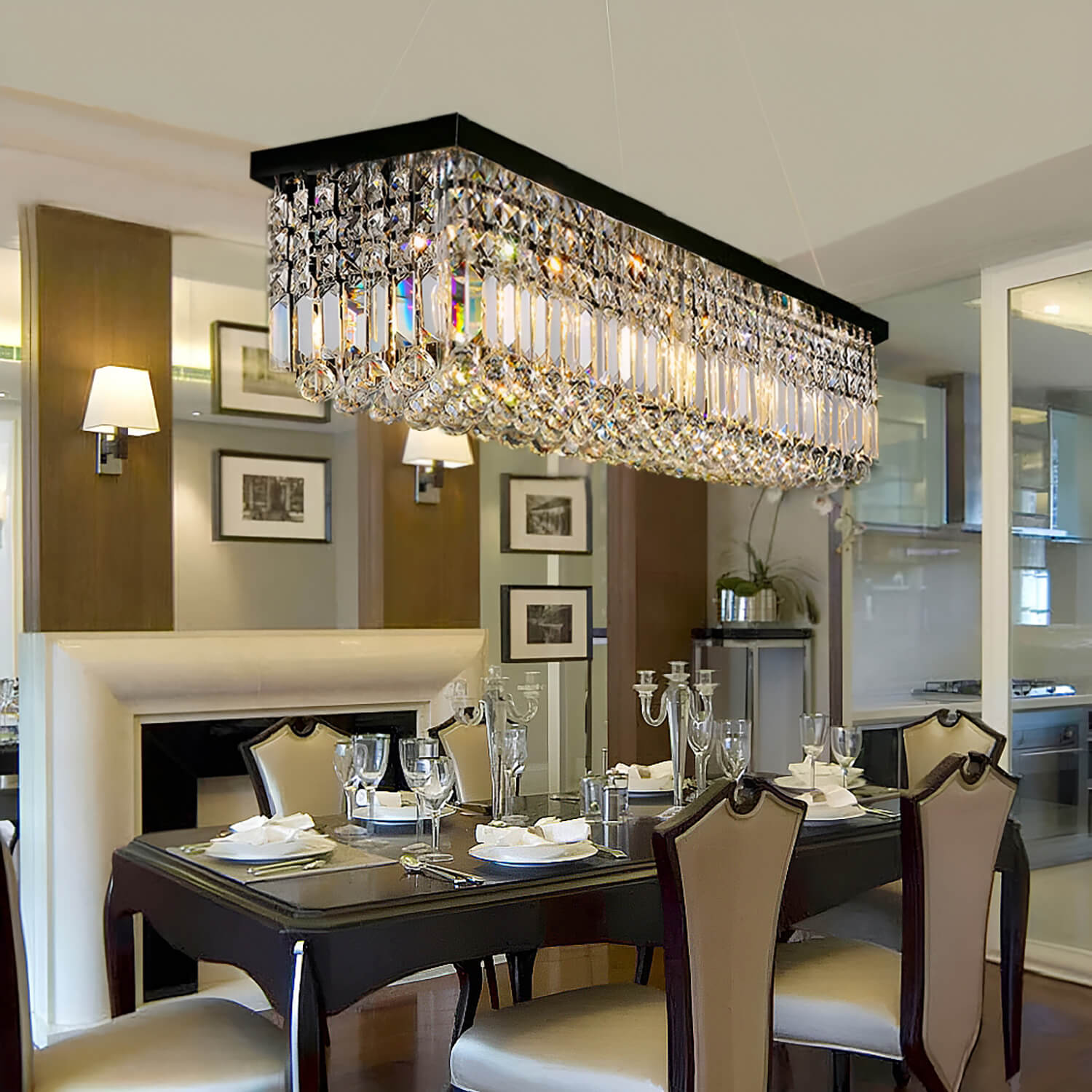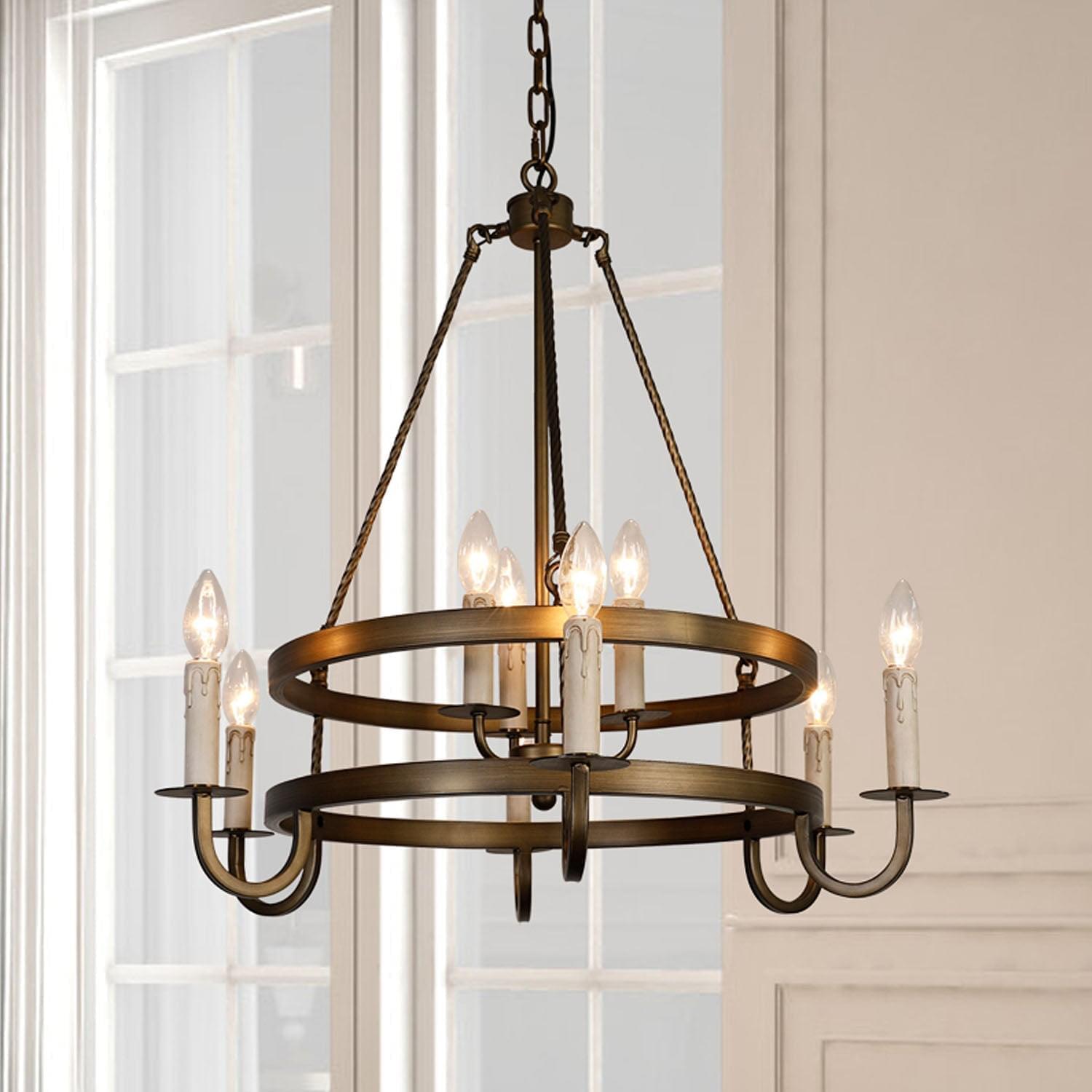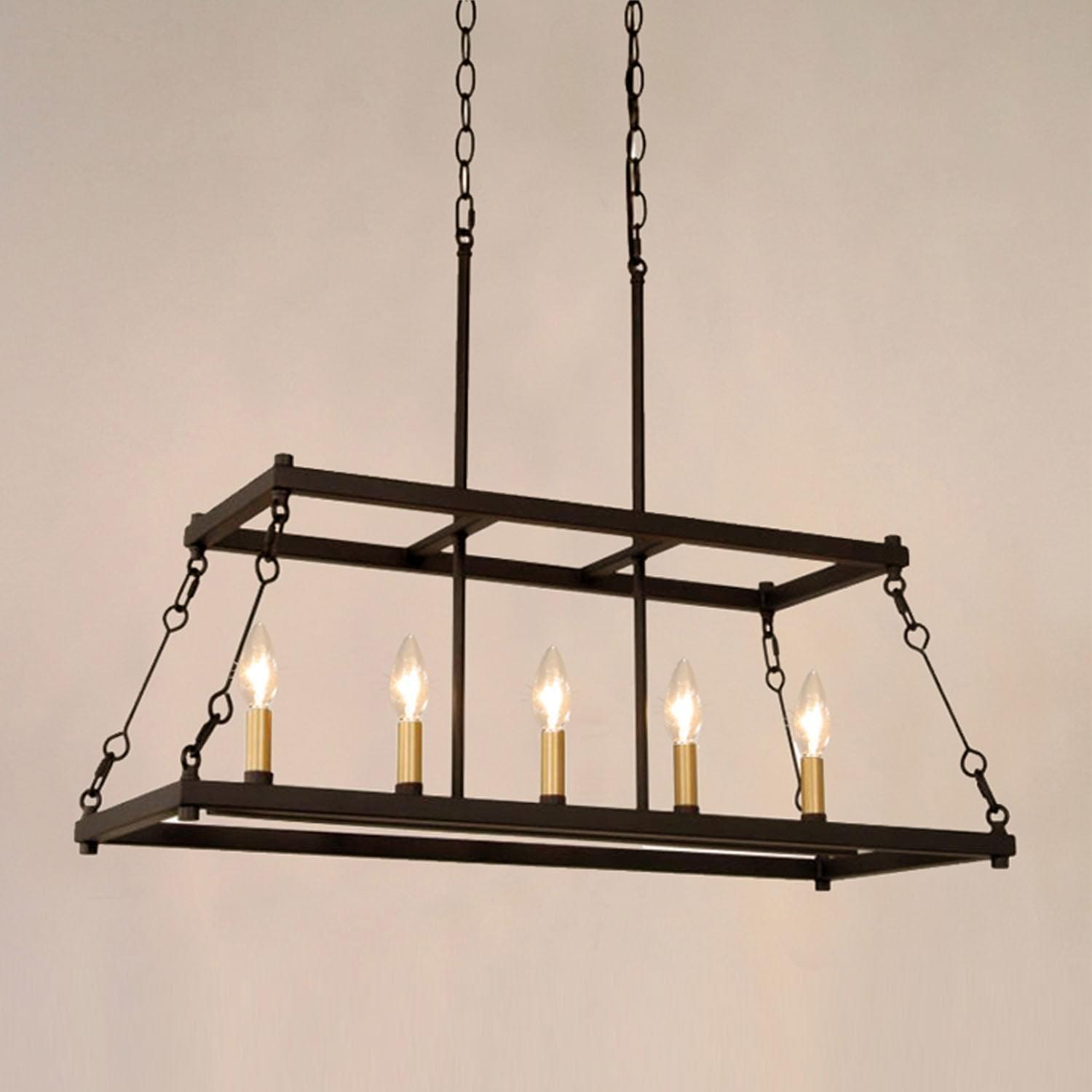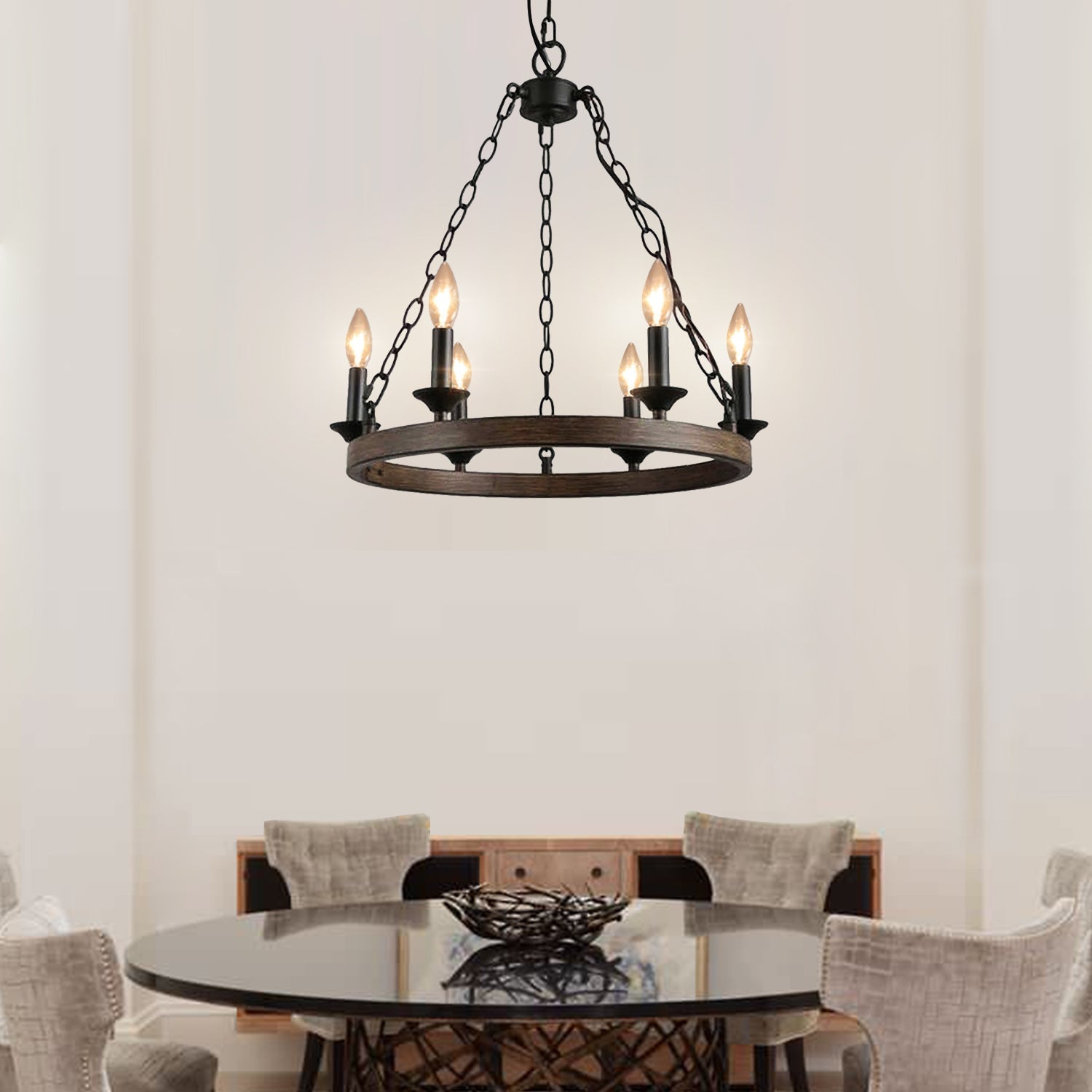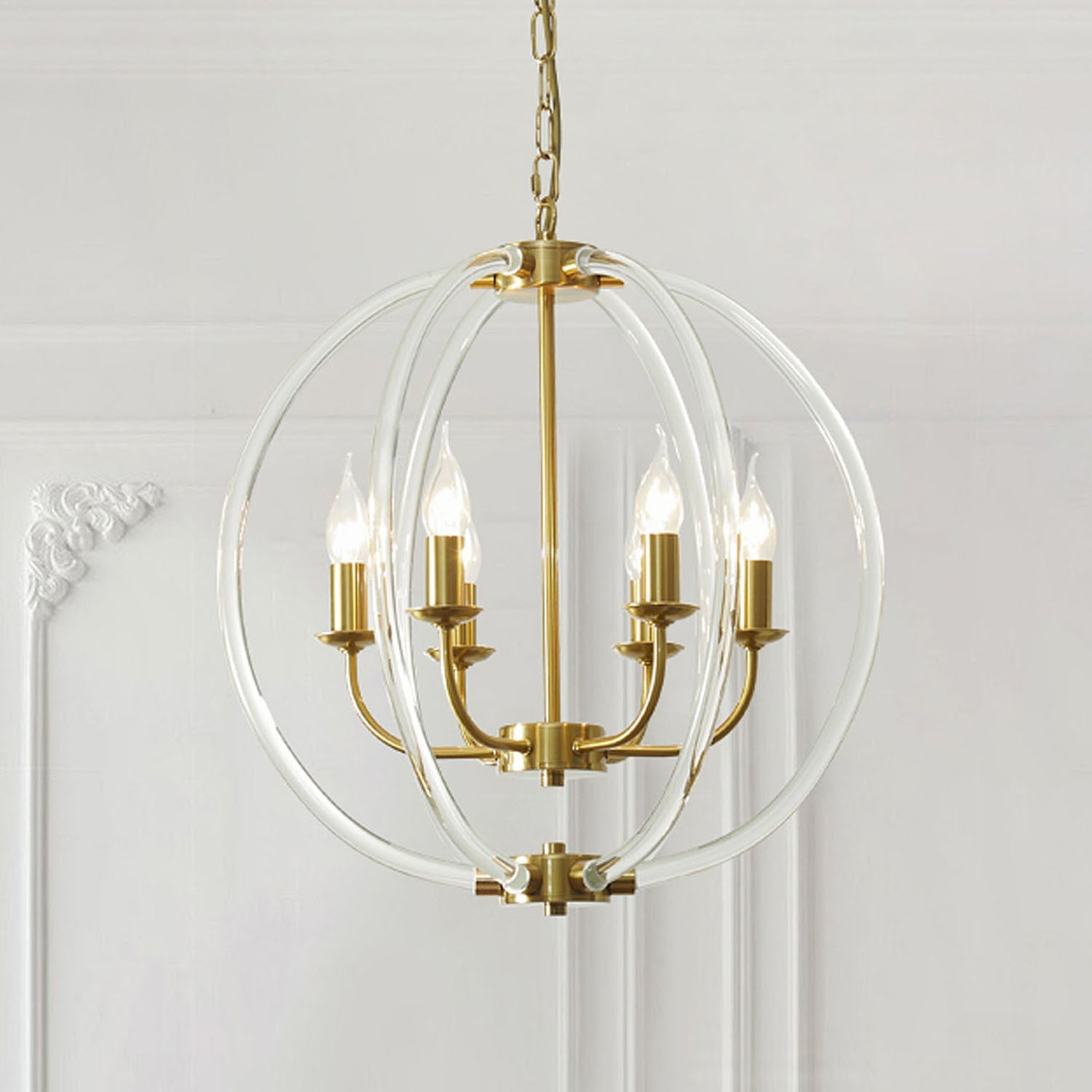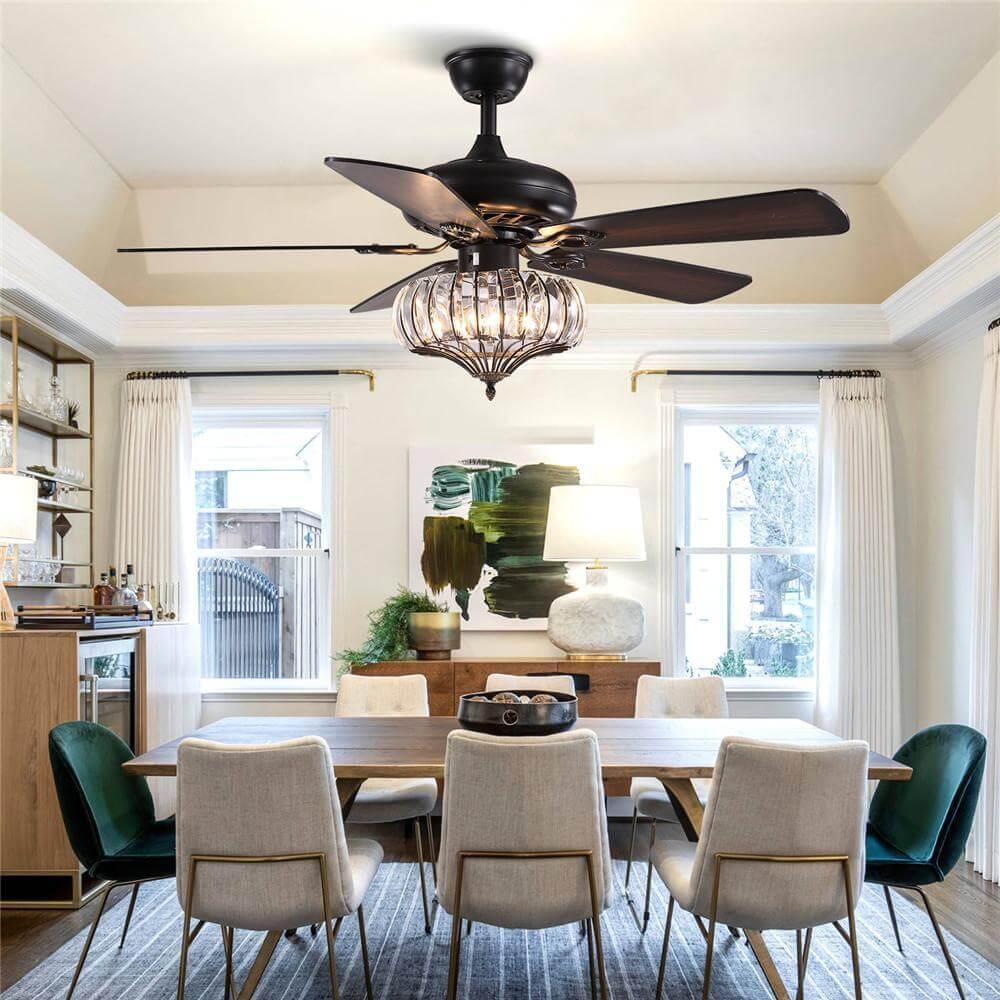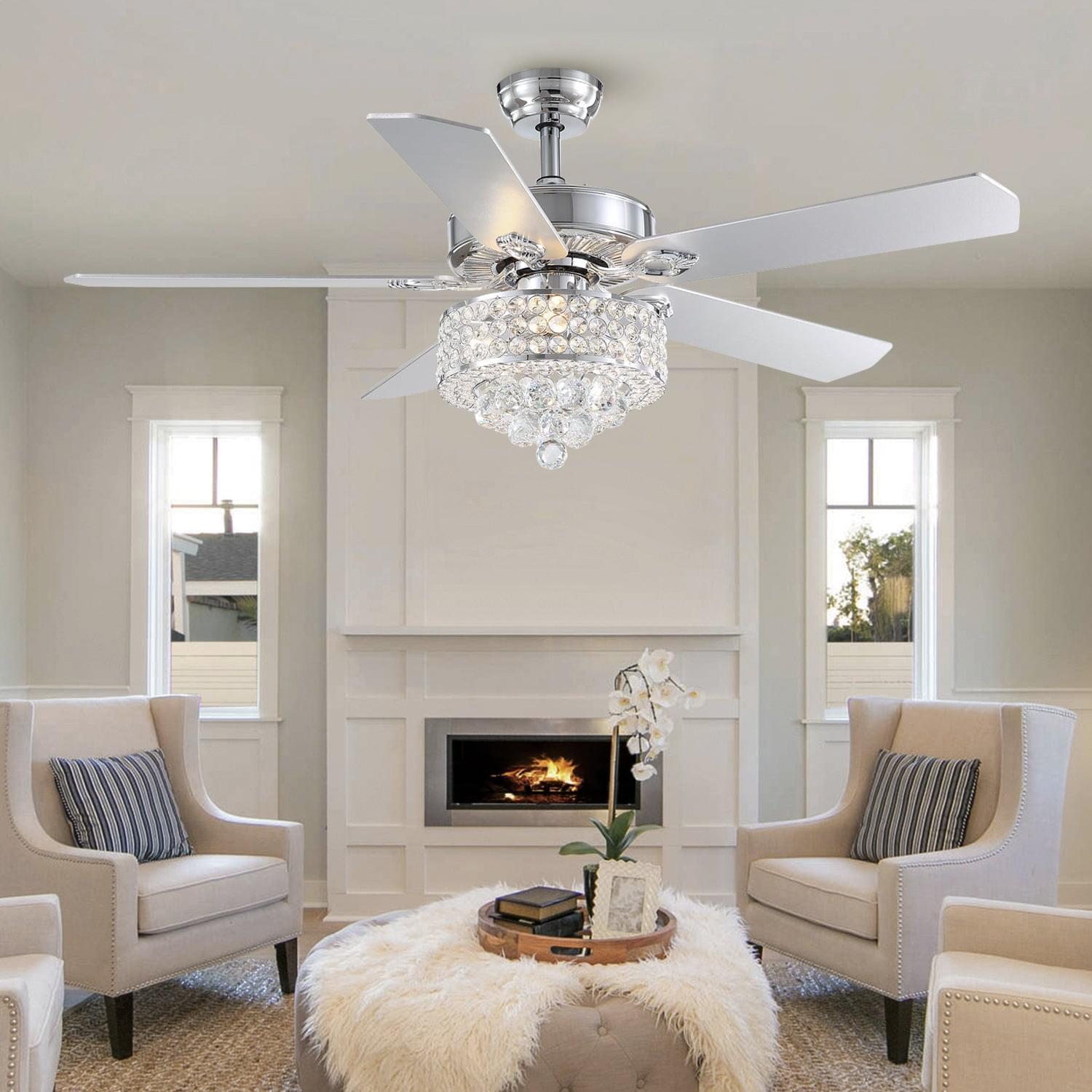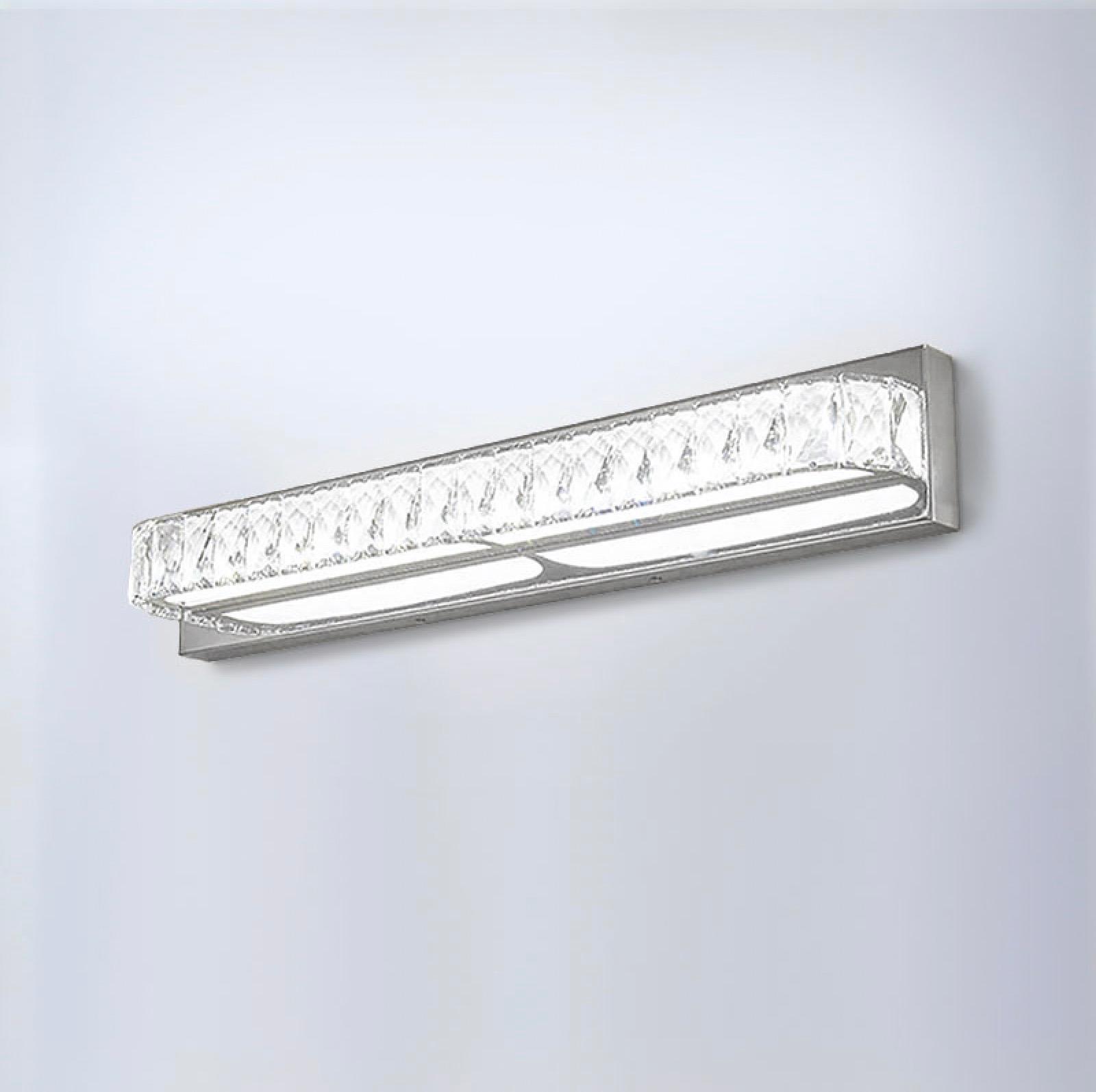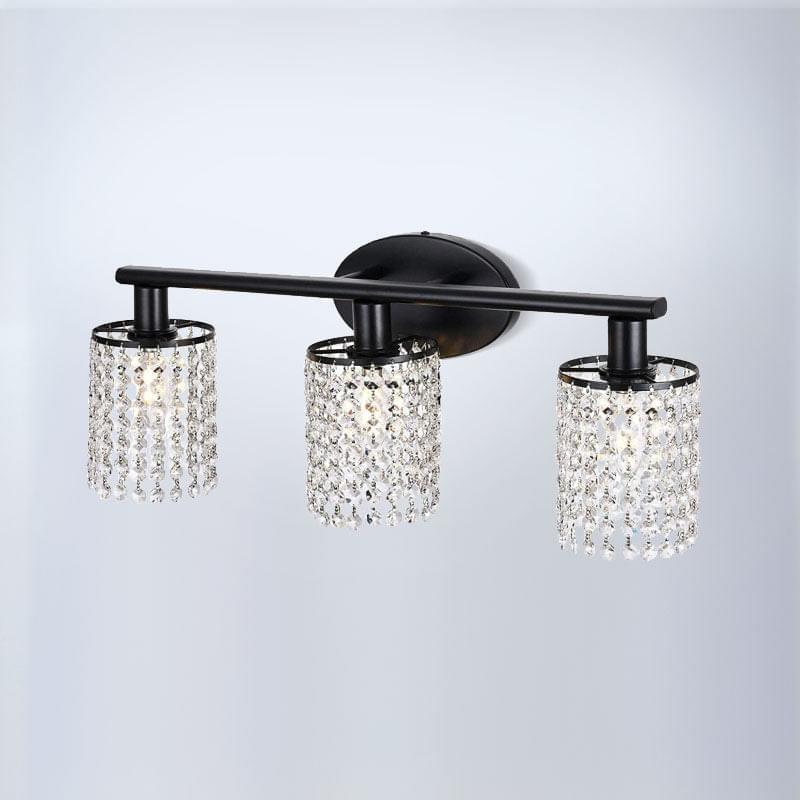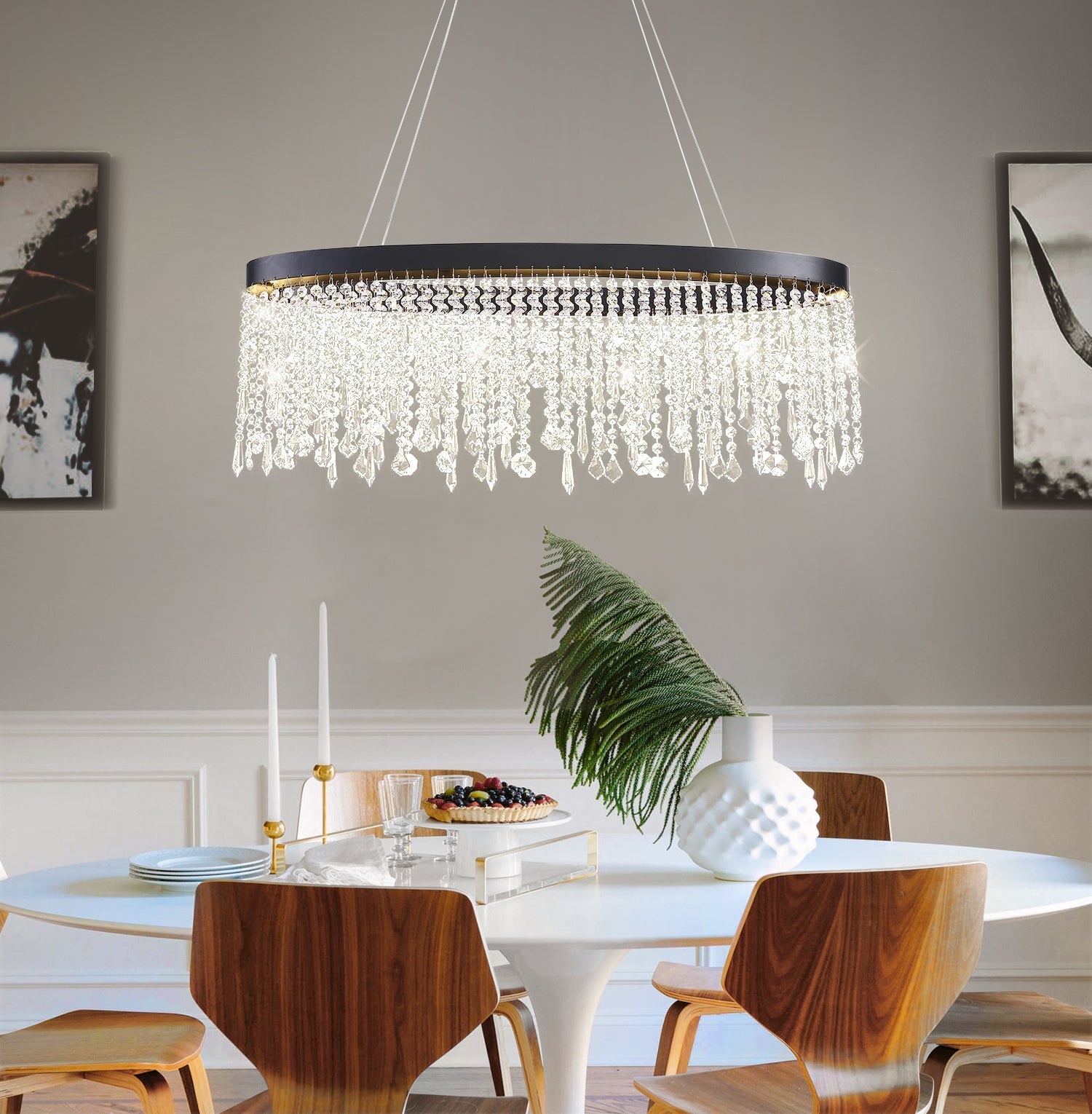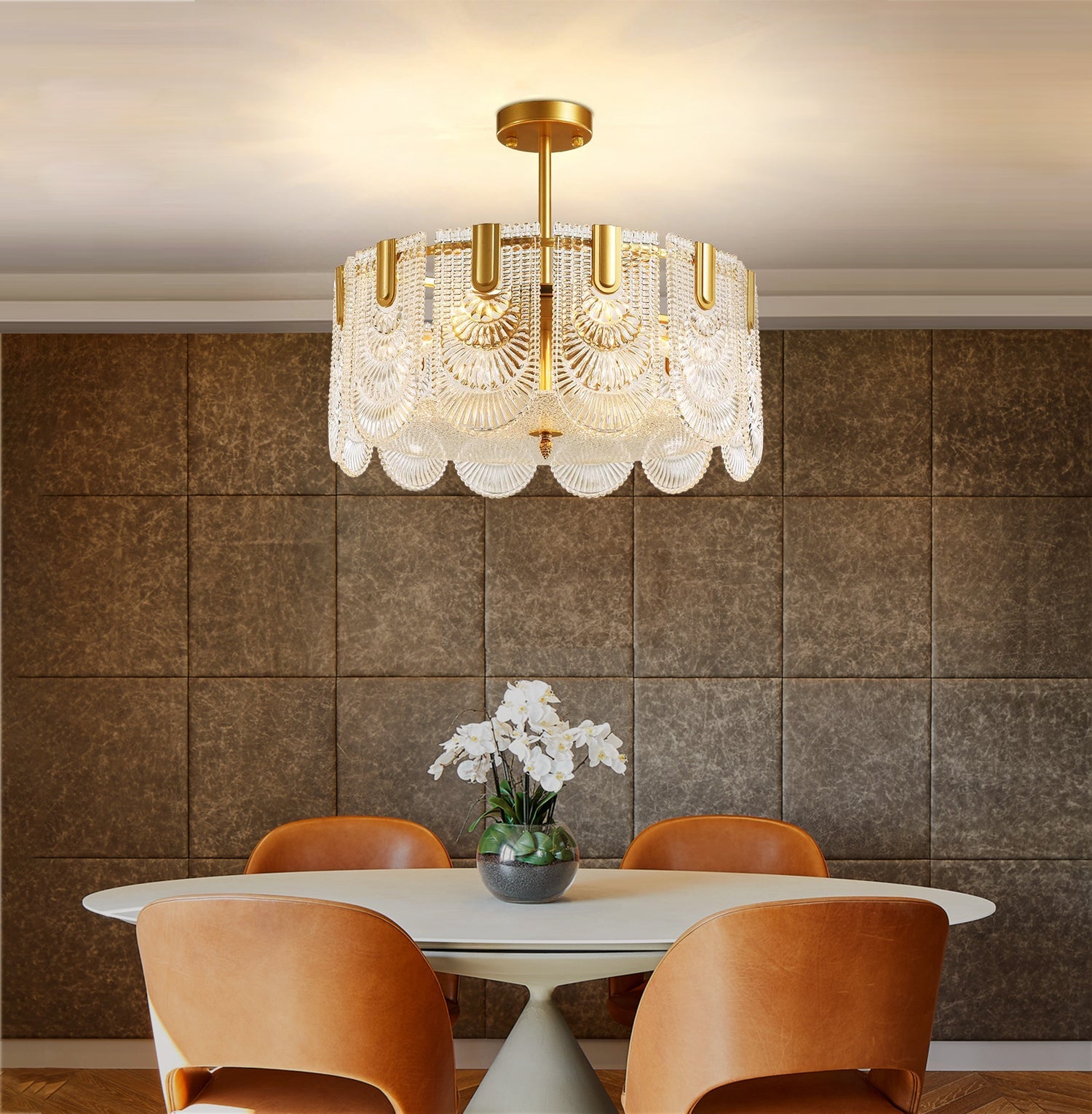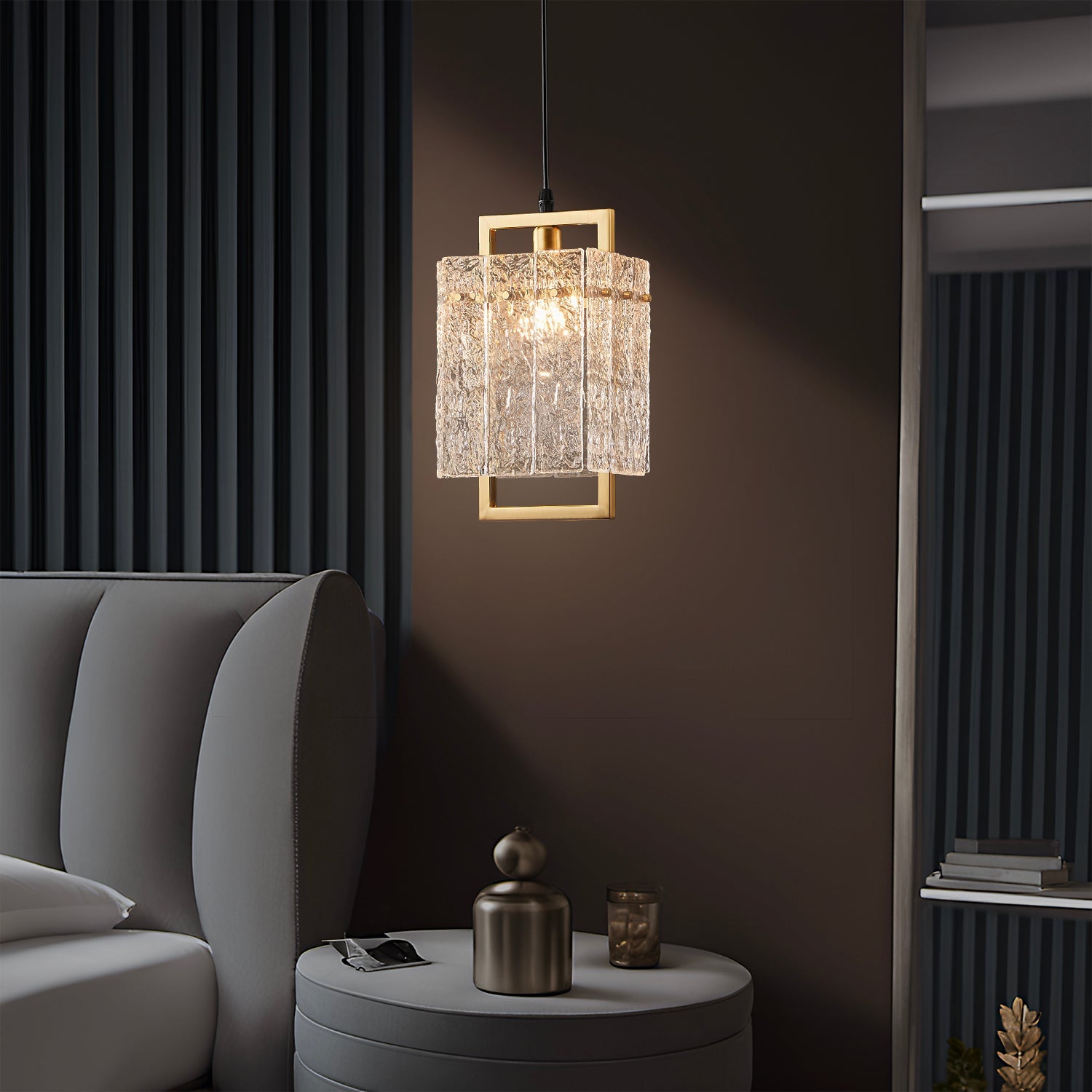Smart lighting technology is revolutionizing how you interact with your environment. Advances in technologically advanced lighting are not only enhancing energy efficiency but also reshaping how lighting impacts your health and surroundings.
Residential LEDs consume at least 75% less energy and last 25 times longer than incandescent bulbs, according to the U.S. Department of Energy.
By 2024, LED lighting is expected to dominate 65% of the market due to its luminous efficacy and reduced maintenance costs.
Government incentives are driving the adoption of energy-efficient lighting in industries, improving sustainability and safety.
Globally, smart lighting solutions are projected to reach $39 billion by 2025, growing at an impressive 14.92% CAGR. Cities like Los Angeles have already seen a 63% reduction in electricity use by converting over 215,000 streetlights, saving $9 million annually and cutting CO₂ emissions by over 47,000 metric tons. These innovations showcase the transformative potential of this technology in creating healthier, sustainable, and beautifully designed spaces.
Key Takeaways
Smart lights save energy, using 90% less power than old bulbs.
Lights that match your body clock help you sleep better.
They also boost your mood and help you work smarter.
IoT lets you control lights from anywhere, saving energy.
AI changes lights automatically when people are in the room.
This saves money and uses less power.
Picking eco-friendly lights helps the Earth and cuts bills.
Human-Centric Lighting
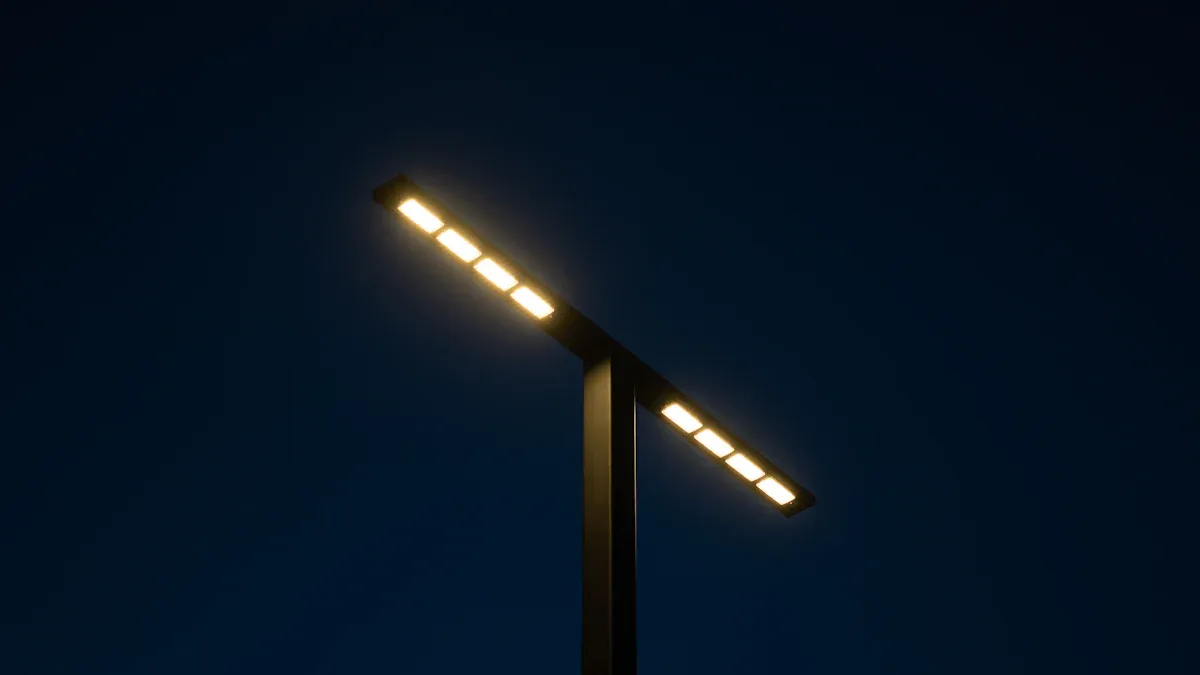
Benefits for Health and Well-Being
Human-centric lighting focuses on aligning artificial light with your natural biological rhythms. This approach can significantly improve your physical and emotional health. Poor lighting conditions and lack of daylight access have been shown to inhibit long-term memory, concentration, and motivation. Additionally, studies reveal that inadequate lighting increases stress hormones, negatively impacting your overall well-being.
Evidence Description |
Source |
|---|---|
Cajochen, 2000 |
|
Significant evidence supports a direct correlation between lack of daylight access and increased stress hormones. |
Leproult, 2001 |
Human-centric lighting positively impacts patient outcomes and student performance. |
Grand View Research, 2023 |
Human-centric lighting technologies, such as tunable white lighting, mimic natural light patterns. These systems help regulate your circadian rhythms, which influence sleep, appetite, and mood. Proper lighting design can reduce disruptions to these rhythms, preventing chronic health issues like sleep disorders and mood disturbances.
Irregular sleep patterns caused by artificial light can disrupt circadian rhythms.
Tunable white technology enhances patient outcomes and caregiver well-being.
Aligning lighting with circadian rhythms positively impacts sleep, appetite, and mood.
Enhancing Productivity in Workspaces
Lighting plays a crucial role in your productivity and creativity. Thoughtfully designed lighting solutions can increase workplace productivity by 6% and enhance creative output by up to 15%. Workers exposed to circadian lighting experience a 12% boost in task performance.
Benefit |
Description |
|---|---|
Increased Productivity |
A study found a 12% increase in task performance under circadian lighting. |
Enhanced Work Environment |
Human-centric lighting improves comfort and productivity in various settings. |
Positive Effects of Blue Light |
Blue-enriched white light improves alertness and performance. |
Human-centric lighting systems improve concentration and energy levels, making them ideal for workspaces. By supporting your natural biological clock, these systems create an environment that fosters focus and efficiency.
Proper lighting design enhances workplace productivity by 6%.
Creative output increases by up to 15% under optimized lighting conditions.
Circadian lighting boosts task performance by 12%.
Integration with Circadian Rhythm Technology
Circadian rhythm technology is at the heart of human-centric lighting. This innovation ensures that lighting adapts to your body's natural cycles, promoting better sleep, mood, and overall health. Exposure to full-spectrum light, such as that from LEDs, supports healthier sleep patterns and reduces stress.
Benefit |
Description |
|---|---|
Circadian Rhythm Support |
Proper lighting helps maintain the body's natural biological clock. |
Better Sleep |
Exposure to full-spectrum light supports healthier sleep patterns. |
Emotional and Physical Health |
Disruption of circadian rhythms can lead to serious health issues like depression and obesity. |
Technologically advanced lighting systems now integrate circadian rhythm technology to align artificial light with natural daylight patterns. This alignment improves your mood, cognitive function, and physical health. For example, LED lighting has been shown to enhance mood and reduce anxiety, while also aiding in the treatment of seasonal affective disorder (SAD).
Disruptions to circadian rhythms can lead to chronic health issues like sleep disorders.
Proper lighting design significantly impacts your overall well-being.
LED lighting improves mood, reduces stress, and supports healthier sleep patterns.
Smart and Adaptive Lighting Systems
IoT Integration for Seamless Connectivity
The Internet of Things (IoT) is transforming how lighting systems operate. By connecting lighting fixtures to a network, IoT enables you to control and monitor them remotely. This integration improves energy efficiency and enhances the overall user experience. For example:
IoT connectivity in street lighting allows for real-time monitoring and control, improving operational efficiency.
Remote adaptive lighting adjusts brightness based on data from sensors, optimizing power usage.
A hierarchical IoT model uses end nodes for sensing, connectivity layers for data transmission, and an application layer for management.
Cities worldwide are adopting IoT-enabled lighting to reduce energy consumption. In Sheffield, smart streetlighting solutions have cut energy usage and carbon emissions by up to 65%. Similarly, Edinburgh's smart lighting project is projected to save £54 million over 20 years by reducing energy expenditure by 50-60%.
AI-Driven Customization and Automation
Artificial intelligence (AI) is revolutionizing lighting systems by making them smarter and more efficient. AI-driven systems analyze data from sensors to adjust lighting based on occupancy and natural light availability. This automation reduces energy waste and enhances sustainability. Key benefits include:
Automated control of lighting based on user preferences.
Scheduling energy-intensive tasks during off-peak hours to lower electricity costs.
Continuous optimization of lighting through data analysis, such as dimming lights in unoccupied areas.
For instance, AI systems adapt to your behavior, ensuring lighting meets your needs while minimizing energy consumption. These advancements in technologically advanced lighting not only save energy but also reduce costs and environmental impact.
User-Centric Features and Personalization
Modern lighting systems prioritize your preferences and comfort. User-centric designs allow you to customize lighting settings, such as brightness and color temperature, to suit your activities and mood. Studies show that mixed color temperatures and personalized settings improve user satisfaction.
Model Type |
Description |
|---|---|
Illumination Models |
Derived from correlated color temperature, vertical illuminance, and saturation enhancement. |
Non-Visual Parameters |
Successfully combined with Circadian Stimulus for better health outcomes. |
Preference Models |
High correlation found between lighting settings and user preferences. |
Personalized lighting enhances your experience, whether you're working, relaxing, or entertaining. By aligning with your preferences, these systems create a more comfortable and engaging environment.
Sustainability and Eco-Friendly Innovations
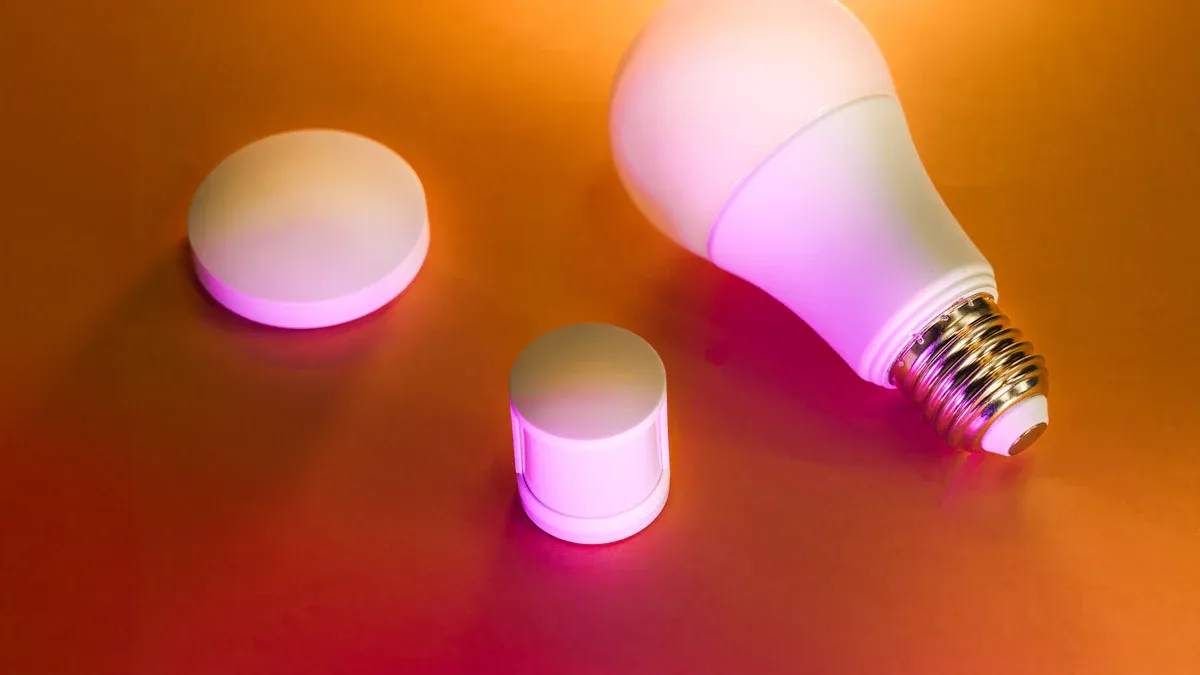
Energy-Efficient Lighting Solutions
Energy-efficient lighting has become a cornerstone of sustainable living. By switching to advanced lighting technologies, you can significantly reduce energy consumption and save money. For instance, LEDs use up to 90% less energy than traditional incandescent bulbs and last up to 25 times longer. This means fewer replacements and lower electricity bills. On average, households save $225 annually by adopting energy-efficient lighting.
Metric |
Value |
|---|---|
Percentage of home electricity use |
15% |
Average savings per household |
$225 per year |
Smart lighting controls take efficiency a step further. These systems adjust brightness based on occupancy and natural light, offering an additional 24-38% savings on energy. By embracing these solutions, you not only cut costs but also contribute to a greener planet.
Use of Recyclable and Sustainable Materials
The lighting industry is shifting toward environmentally friendly practices by incorporating recyclable and sustainable materials into its designs. This trend is driven by stricter regulations aimed at reducing electronic waste and growing awareness of environmental sustainability. For example, the LED recycling market is expanding rapidly, reflecting the industry's commitment to reducing its ecological footprint.
Manufacturers now prioritize reusable materials in lighting fixtures, ensuring that products are both durable and eco-conscious. This approach aligns with the broader movement toward sustainable LED technologies, which combine energy efficiency with minimal environmental impact. By choosing lighting solutions made from recyclable materials, you support a circular economy and help reduce waste.
Reducing Carbon Footprint in Lighting Design
Advanced lighting designs play a crucial role in lowering carbon emissions. Studies show that optimizing existing lighting systems can reduce energy use by 16%. Simple actions like cleaning fixtures and replacing outdated lamps can recover over 25% of lost light, further enhancing efficiency.
LED technology has already halved electricity consumption in commercial lighting over the past two decades. With continued innovation, the potential for even greater reductions remains high. By adopting technologically advanced lighting, you actively reduce your carbon footprint while enjoying superior performance and design.
Optimizing lighting systems cuts energy use by 16%.
Cleaning fixtures and upgrading lamps recover 25% of lost light.
LEDs have halved electricity consumption in commercial spaces.
These advancements demonstrate how sustainable lighting solutions benefit both the environment and your daily life.
Advanced Optical and Design Trends in Technologically Advanced Lighting
Minimalist and Aesthetic Lighting Designs
Minimalist lighting designs are gaining traction in modern architecture. These designs emphasize simplicity and elegance, creating spaces that feel open and uncluttered. You’ll notice trends like mid-century modern, Scandinavian modernism, and minimalism dominating the aesthetic landscape. Designers predict that these styles will remain popular, with specific lighting fixtures such as Murano glass pendants, Noguchi lamps, and Venini-style mushroom lamps reflecting this preference.
Minimalist lighting doesn’t just enhance the visual appeal of your space; it also contributes to a calming atmosphere. By reducing visual noise, these designs help you focus and relax. Whether you’re decorating a home or a workspace, minimalist lighting offers a timeless solution that blends functionality with beauty.
Mid-century modern aesthetics account for 40% of design preferences.
Scandinavian modernism appeals to 37% of designers.
Minimalist styles, including Murano glass pendants, remain a favorite among 34% of architects.
Multi-Functional Lighting Fixtures
Lighting fixtures are evolving to serve multiple purposes. Multi-functional designs combine illumination with features like wireless charging, integrated speakers, or even air purification. These innovations make your lighting fixtures more than just a source of light—they become essential tools for modern living.
For example, you can find lamps that double as smart hubs, allowing you to control other devices in your home. Some fixtures include adjustable arms or modular components, enabling you to customize their shape and function. These designs cater to your needs, whether you’re working, relaxing, or entertaining.
Multi-functional lighting fixtures save space and reduce clutter, making them ideal for compact living areas. They also align with the growing demand for sustainable and versatile products, ensuring you get the most out of your investment.
Innovations in Light Quality and Color Rendering
Advancements in light quality and color rendering are transforming how you perceive spaces. Spectral Power Distribution (SPD) charts reveal how different light sources emit power across visible wavelengths, influencing the way colors appear. Higher color temperature lighting improves visual acuity, especially in children, by affecting pupil size and enhancing focus.
New standards like the TM-30-15 method provide a more accurate evaluation of color rendering compared to traditional metrics like CRI. This innovation ensures that lighting delivers consistent and vibrant colors, improving both aesthetics and functionality.
These advancements in technologically advanced lighting enhance your visual experience, whether you’re reading, cooking, or enjoying art. Improved color rendering makes spaces feel more natural and inviting, while better light quality supports your daily activities.
SPD charts show how light sources impact color perception.
Higher color temperatures improve focus and visual clarity.
TM-30-15 offers a comprehensive evaluation of color rendering.
Emerging Technologies in Technologically Advanced Lighting
Li-Fi for High-Speed Data Transmission
Li-Fi, or Light Fidelity, is revolutionizing how you experience data transmission. Unlike traditional Wi-Fi, Li-Fi uses light waves instead of radio waves to transfer data. This technology offers ultra-fast speeds and avoids interference issues common in crowded wireless environments. Laboratory tests have demonstrated data transmission speeds exceeding 10 Gbps, making Li-Fi a game-changer for smart lighting systems.
In real-world applications, Li-Fi has already shown impressive results. For example:
In Barcelona, Li-Fi-enabled streetlights reduced pollution hotspots by 15% within six months.
At the University of Edinburgh, operating rooms achieved data transfer rates of 10 Gbps during trials.
A German factory improved production line efficiency by 20% by eliminating delays caused by Wi-Fi interference.
Li-Fi is also expected to power over 40% of IoT devices in smart cities by 2030. This integration will enhance urban infrastructure, enabling smart streetlights to monitor environmental conditions, manage parking, and provide surveillance. By adopting Li-Fi, you can enjoy faster, more reliable connectivity while contributing to a more efficient and sustainable future.
Bluetooth Mesh for Enhanced Connectivity
Bluetooth Mesh technology is transforming how lighting systems communicate. It allows multiple devices to form a network, ensuring seamless connectivity and control. Designed with Bluetooth Low Energy, this technology uses ultra-short packets and multiple frequency channels to enhance efficiency.
Bluetooth Mesh has proven its reliability in various tests. For instance:
It outperformed other 802.15.4 technologies in commercial lighting applications.
Real-world tests with over 1,000 Bluetooth devices in a congested environment showed consistent functionality and reliability.
Strategies like multipath delivery and node retransmissions improved communication without overloading devices.
The scalability of Bluetooth Mesh is another standout feature. A single network can support up to 32,767 nodes, making it ideal for large-scale lighting installations. Whether you're managing a smart home or a commercial building, Bluetooth Mesh ensures your lighting system remains efficient and responsive.
Organic LEDs (OLEDs) for Flexible and Efficient Lighting
Organic LEDs (OLEDs) are redefining lighting design with their flexibility and efficiency. Unlike traditional LEDs, OLEDs use organic materials to produce light, allowing for thinner, more adaptable designs. These features make OLEDs perfect for integrating into ceilings, walls, and even windows.
OLEDs offer several advantages:
Feature |
Description |
|---|---|
Energy Efficiency |
30 lm/W at 1000 cd/m², which is 2 to 3 times higher than common incandescent bulbs. |
Manufacturing Technology |
Use of printing technologies on flexible substrates for large-scale manufacturing. |
Applications |
Potential integration in ceilings, walls, and windows due to thin, flexible, and transparent design. |
Material Innovation |
Utilizes organic functional materials and advanced encapsulation technologies. |
Scalability |
Demonstrated success in translating from small rigid substrates to large flexible plastic substrates. |
These advancements make OLEDs a versatile choice for technologically advanced lighting. Their ability to combine energy efficiency with innovative design ensures they meet both functional and aesthetic needs. By choosing OLEDs, you can create spaces that are not only well-lit but also visually stunning.
Smart lighting technology is reshaping how you interact with your environment. The market is projected to grow significantly, with an estimated value of $21.23 billion in 2025 and a CAGR of 17.4%. By 2032, this figure could reach $71.76 billion, highlighting its transformative potential.
Year |
Market Size (USD) |
CAGR (%) |
|---|---|---|
2025 |
21.23 billion |
17.4 |
2032 |
71.76 billion |
N/A |
These advancements prioritize your health, reduce energy consumption, and enhance connectivity. From circadian rhythm lighting to Li-Fi and OLEDs, the innovations promise a brighter, more sustainable future. As you embrace these technologies, you contribute to a smarter and greener world.
FAQ
What is human-centric lighting, and how does it benefit you?
Human-centric lighting aligns artificial light with your natural biological rhythms. It improves your sleep, mood, and productivity by mimicking natural daylight patterns. This type of lighting supports your overall well-being and enhances focus in workspaces.
How does smart lighting save energy in your home?
Smart lighting uses sensors and automation to adjust brightness based on occupancy and natural light. This reduces unnecessary energy use. LEDs, commonly used in smart systems, consume up to 90% less energy than traditional bulbs, saving you money and lowering your carbon footprint.
Can you control smart lighting remotely?
Yes, you can control smart lighting remotely using apps or voice assistants. IoT-enabled systems allow you to adjust brightness, color, and schedules from anywhere. This feature adds convenience and ensures your lighting adapts to your needs.
What makes OLEDs different from traditional LEDs?
OLEDs use organic materials to emit light, making them thinner and more flexible than traditional LEDs. They offer better design versatility, energy efficiency, and even light distribution. You can integrate OLEDs into walls, ceilings, or windows for innovative lighting solutions.
Is Li-Fi better than Wi-Fi for smart lighting?
Li-Fi uses light waves instead of radio waves for data transmission. It offers faster speeds and avoids interference in crowded areas. This makes it ideal for smart lighting systems, especially in environments where reliable connectivity is essential.
